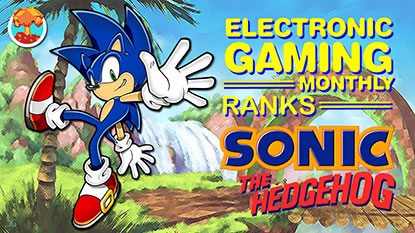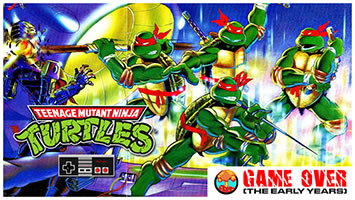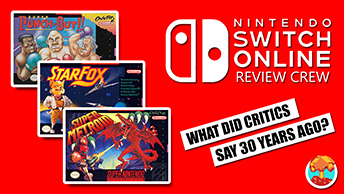- CLASSIC MAGAZINES
- REVIEW CREW
A show recapping what critics thought back
when classic games first came out! - NEXT GENERATION'S BEST & WORST
From the worst 1-star reviews to the best
5-stars can offer, this is Next Generation! - NINTENDO POWER (ARCHIVE)
Experience a variety of shows looking at the
often baffling history of Nintendo Power! - MAGAZINE RETROSPECTIVE
We're looking at the absolutely true history of
some of the most iconic game magazines ever! - SUPER PLAY'S TOP 600
The longest and most ambitious Super NES
countdown on the internet! - THEY SAID WHAT?
Debunking predictions and gossip found
in classic video game magazines! - NEXT GENERATION UNCOVERED
Cyril is back in this spin-off series, featuring the
cover critic review the art of Next Generation! - HARDCORE GAMER MAGAZING (PDF ISSUES)
Download all 36 issues of Hardcore Gamer
Magazine and relive the fun in PDF form!
- REVIEW CREW
- ELECTRONIC GAMING MONTHLY
- ELECTRONIC GAMING MONTHLY RANKS
From Mario to Sonic to Street Fighter, EGM
ranks classic game franchises and consoles! - ELECTRONIC GAMING MONTHLY BEST & WORST
Counting down EGM’s best and worst reviews
going year by year, from 1989 – 2009! - ELECTRONIC GAMING BEST & WORST AWARDS
11-part video series chronicling the ups and
downs of EGM’s Best & Worst Awards!
- ELECTRONIC GAMING MONTHLY RANKS
- GAME HISTORY
- GAME OVER: STORY BREAKDOWNS
Long-running series breaking down game
stories and analyzing their endings! - A BRIEF HISTORY OF GAMING w/ [NAME HERE]
Real history presented in a fun and pithy
format from a variety of game historians! - THE BLACK SHEEP
A series looking back at the black sheep
entries in popular game franchises! - INSTANT EXPERT
Everything you could possibly want to know
about a wide variety of gaming topics! - FREEZE FRAME
When something familiar happens in the games
industry, we're there to take a picture! - I'VE GOT YOUR NUMBER
Learn real video game history through a series
of number-themed episodes, starting at zero! - GREAT MOMENTS IN BAD ACTING
A joyous celebration of some of gaming's
absolute worst voice acting!
- GAME OVER: STORY BREAKDOWNS
- POPULAR SHOWS
- DG NEWS w/ LORNE RISELEY
Newsman Lorne Riseley hosts a regular
series looking at the hottest gaming news! - REVIEW REWIND
Cyril replays a game he reviewed 10+ years
ago to see if he got it right or wrong! - ON-RUNNING FEUDS
Defunct Games' longest-running show, with
editorials, observations and other fun oddities! - DEFUNCT GAMES QUIZ (ARCHIVE)
From online quizzes to game shows, we're
putting your video game knowledge to the test!- QUIZ: ONLINE PASS
Take a weekly quiz to see how well you know
the news and current gaming events! - QUIZ: KNOW THE GAME
One-on-one quiz show where contestants
find out if they actually know classic games! - QUIZ: THE LEADERBOARD
Can you guess the game based on the classic
review? Find out with The Leaderboard!
- QUIZ: ONLINE PASS
- DEFUNCT GAMES VS.
Cyril and the Defunct Games staff isn't afraid
to choose their favorite games and more! - CYRIL READS WORLDS OF POWER
Defunct Games recreates classic game
novelizations through the audio book format!
- DG NEWS w/ LORNE RISELEY
- COMEDY
- GAME EXPECTANCY
How long will your favorite hero live? We crunch
the numbers in this series about dying! - VIDEO GAME ADVICE
Famous game characters answer real personal
advice questions with a humorous slant! - FAKE GAMES: GUERILLA SCRAPBOOK
A long-running series about fake games and
the people who love them (covers included)! - WORST GAME EVER
A contest that attempts to create the worst
video game ever made, complete with covers! - LEVEL 1 STORIES
Literature based on the first stages of some
of your favorite classic video games! - THE COVER CRITIC
One of Defunct Games' earliest shows, Cover
Critic digs up some of the worst box art ever! - COMMERCIAL BREAK
Take a trip through some of the best and
worst video game advertisements of all time! - COMIC BOOK MODS
You've never seen comics like this before.
A curious mix of rewritten video game comics!
- GAME EXPECTANCY
- SERIES ARCHIVE
- NINTENDO SWITCH ONLINE ARCHIVE
A regularly-updated list of every Nintendo
Switch Online release, plus links to review! - PLAYSTATION PLUS CLASSIC ARCHIVE
A comprehensive list of every PlayStation
Plus classic release, including links! - RETRO-BIT PUBLISHING ARCHIVE
A regularly-updated list of every Retro-Bit
game released! - REVIEW MARATHONS w/ ADAM WALLACE
Join critic Adam Wallace as he takes us on a
classic review marathon with different themes!- DEFUNCT GAMES GOLF CLUB
Adam Wallace takes to the links to slice his way
through 72 classic golf game reviews! - 007 IN PIXELS
Adam Wallace takes on the world's greatest spy
as he reviews 15 weeks of James Bond games! - A SALUTE TO VAMPIRES
Adam Wallace is sinking his teeth into a series
covering Castlevania, BloodRayne and more! - CAPCOM'S CURSE
Adam Wallace is celebrating 13 days of Halloween
with a line-up of Capcom's scariest games! - THE FALL OF SUPERMAN
Adam Wallace is a man of steel for playing
some of the absolute worst Superman games! - THE 31 GAMES OF HALLOWEEN
Adam Wallace spends every day of October afraid
as he reviews some of the scariest games ever! - 12 WEEKS OF STAR TREK
Adam Wallace boldly goes where no critic has
gone before in this Star Trek marathon!
- DEFUNCT GAMES GOLF CLUB
- DAYS OF CHRISTMAS (ARCHIVE)
Annual holiday series with themed-episodes
that date all the way back to 2001!- 2015: 30 Ridiculous Retro Rumors
- 2014: 29 Magazines of Christmas
- 2013: 29 Questionable Power-Ups of Christmas
- 2012: 34 Theme Songs of Christmas
- 2011: 32 Game Endings of Christmas
- 2010: 31 Bonus Levels of Christmas
- 2009: 30 Genres of Christmas
- 2008: 29 Controls of Christmas
- 2007: 34 Cliches of Christmas
- 2006: 33 Consoles of Christmas
- 2005: 32 Articles of Christmas
- 2004: 31 Websites of Christmas
- 2003: 29 Issues of Christmas
- 2002: 28 Years of Christmas
- 2001: 33 Days of Christmas
- NINTENDO SWITCH ONLINE ARCHIVE
- REVIEW ARCHIVE
- FULL ARCHIVE
Electronic Gaming Monthly's Best Reviewed Games of 1989
The year is 1989 and Michael Keaton is Batman. It was the year when Motley Crue introduced us to Dr. Feelgood, The Simpsons debuted their first episode and both Sega and Nintendo released new hardware. But we're not here to about that time Harry met Sally, because today we're counting down Electronic Gaming Monthly's top reviewed games of 1989.
This is the start of a 16 week series where we'll alternate between the best and worst games from 1989 to 1996. It's a journey that will take us from the final days of the Nintendo Entertainment System, through the 16-bit era and all the way to the rise of the PlayStation, Saturn and Nintendo 64. We're going to cover a lot of ground, starting with 1989. This was Electronic Gaming Monthly's first year, which helps to explain why they only reviewed 52 games. Here are the ten best.
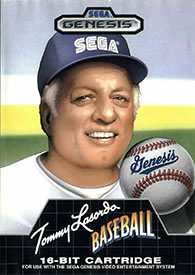

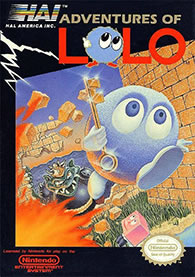
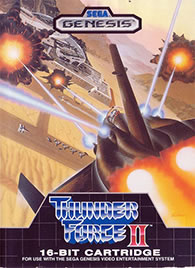
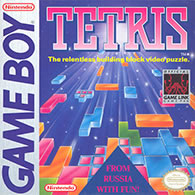
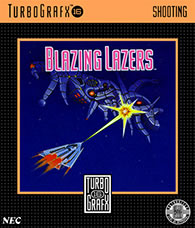

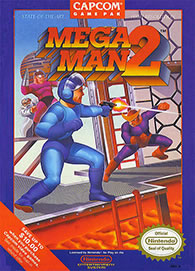
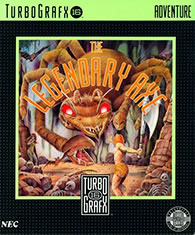
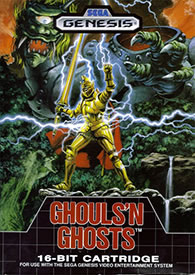
This is the start of a 16 week series where we'll alternate between the best and worst games from 1989 to 1996. It's a journey that will take us from the final days of the Nintendo Entertainment System, through the 16-bit era and all the way to the rise of the PlayStation, Saturn and Nintendo 64. We're going to cover a lot of ground, starting with 1989. This was Electronic Gaming Monthly's first year, which helps to explain why they only reviewed 52 games. Here are the ten best.

Tommy Lasorda Baseball#10After having mixed success with the Master System, Sega decided to take a more aggressive approach when launching the Genesis. One of the things they did was spend the money on high profile athletes and coaches for a brand new line-up of sports games, including Pat Riley Basketball, James "Buster" Douglas Knockout Boxing and Arnold Palmer Tournament Golf. Of this series, only one managed to earn scores high enough to warrant a place in this list -- Tommy Lasorda Baseball.
Like most early 16-bit games, Electronic Gaming Monthly was blown away by the visuals. "Tommy Ladora Baseball is without a doubt the best looking video baseball I've ever played," raved Steve Harris. Ed Semrad agreed, saying: "With the new capabilities of the 16-bit machines, baseball has come one step closer to reality." Both critics gave it an 8 out of 10.
Donn and Jim weren't as blown away by the 16-bit graphics as their colleagues. Giving it a 7, Donn explains that "the game itself is good, with most of the features found in baseball. The way it tracks the league is cool, but other than that, Tommy Lasorda Baseball is about the same as the others but with 16-bit looks." With two critics giving it 8s and two giving it 7s, this very first Genesis baseball game averaged a total of 7.5.

Ironsword: Wizards & Warriors II#9If you don't think a memorable cover is important, then just ask Ironsword: Wizards & Warriors II. Nearly three decades after release, just about the only thing people remember about the game is that it had Fabio on the cover. The male model-turned-crackpot also appeared on the cover of Electronic Gaming Monthly, where they ended up giving the game an average of 7.5 out of 10.
The general consensus was that Ironsword was a significant important over the first Wizards & Warriors. "Even though the game requires the same precise jumps that I hated about the original," starts Steve, "Ironsword is so big and has so much to offer, most of the competition pales by comparison." Ed agreed, saying that "Ironsword is longer, harder, more involving, and deeper, with some very different features that make it exceptional." The two suggested that Ironsword was a must-own, but still only gave it an 8 out of 10.
Once again, Donn and Jim weren't as thrilled. "The game requires precise movements that detract from play in several areas, but it is definitely an above average title," concludes Donn. Jim notes that he has "nothing bad to say about Ironsword," and yet still gives it only a 7 out of 10. The fact that games with 7s are sneaking into the top 10 list is a testament to the fact that EGM only reviewed a handful of games in 1989. This wouldn't make the cut in any other year.

Adventures of Lolo#8Given Nintendo's penchant for wanting to resurrect their old school franchises, you would think that they would have rebooted Adventures of Lolo a long time ago. Of all their classic games, this adorable puzzler is the best suited for an eShop release. It stars a likable hero, takes place in a colorful world and is one of Nintendo's few 8-bit trilogies. The critics at Electronic Gaming Monthly agree with me, or at least they did in 1989, when they gave the game nothing but 7s and 8s.
To put it bluntly, I think EGM was confused by Adventures of Lolo. Steve argued that it's "an absolutely entrancing game," noting that "while it may not be high on shoot-em-up action, it does have game play that is addicting beyond belief." Donn liked the "pretty good graphics and music," saying that they enhance the "action/strategy hybrid that is highly addictive." On the other hand, Jim concluded that the game is "not unbeatable, despite the number of rooms that must be overcome." Well, that's good to know.
Perhaps the most baffling review came from Steve, who ended up giving it an 8 out of 10. "I feel sorry for this game." Why? Well, he doesn't say. He compares it to Soloman's Key and notes that the "kiddie graphics disguise a game that is for all ages and filled with countless hours of enjoyment," but none of that is worth feeling sorry about. Had he known that Nintendo would publish two more sequels, I doubt he would have started his review that way. Adventures of Lolo averaged a 7.5.

Thunder Force II#7Thunder Force II is a good game; I think most of us can agree on that. But much like the original, this 1989 shoot-em-up was quickly overshadowed by Thunder Force III, one of the single greatest 16-bit games of all time. But Electronic Gaming Monthly had no idea how much better the sequel was going to be, which helps to explain why most of the editors gave it 8s and called it "another example of how much better a 16-bit cart can be!"
"You haven't seen great graphics until you've seen Thunder Force II," raves Ed. "Easily the best visuals in a shoot-em-up, with both horizontal and vertical fighting sequences." Jim agreed, explaining that "Thunder Force II has graphics and sounds that blow me away. The game is impressive as well, with a ton of power-ups that boost your weapons to new heights." Just wait until these two see Thunder Force III.
Donn was the only EGM critic to not give the game an 8, calling it a "very good game" and concluding that "This is one shooting game that has teeth." The only real complaint I could find was in Steve's review, where he explained that "the overhead sequence is not as strong as the side scenes," which may help to explain why it was completely ditched in the third installment. Either way, Thunder Force II managed to average an impressive 7.75 out of 10.

Tetris#6If you had asked me in 1989 what Game Boy launch title was going to be remembered three decades later, I would have told you that the answer was Super Mario Land. Obviously. I mean, you're a fool to bet against a Mario game made by Nintendo. But lo and behold, that didn't turn out to be the case. According to the number crunchers, Tetris is not only the best-selling game of all time, but also a game that's still being remade to this very day. Hell, I reviewed a brand new Tetris game just a few weeks ago.
None of the EGM critics seemed even remotely aware of the importance Tetris would have to the video games industry. Many called it the "perfect portable game," since "you can't finished [it]" and it "remains constantly absorbing throughout." David explains that it's "easy to learn, yet challenging to play." Ed called it "the perfect match for anyone." Even Martin, who gave the lowest score, concluded that "Tetris is VERY addicting!"
Weirdly enough, all four of the critics got hung up on the two-player "video link" mode. Don't get me wrong, I think the multiplayer mode is certainly fun and I spent hours going head-to-head with my dad back in the day, but it's surprising to see so much time spent to a mode very few people even remember. Pulling in mostly 8s, Tetris ended up averaging a solid 7.75 out of 10.

Blazing Lazers#5Of all the games that we're going to talk about today, it's Blazing Lazers that has the largest disparity of scores. While most have been in the range of 7s and 8s, this TurboGrafx-16 shoot-em-up managed to score a 6 all the way up to a 9. I would like to believe that this led to a lot of spirited debates amongst the staff, but they were probably too busy playing 30 games an issue to care what other people said.
Let's go ahead and start with the low score. Ed called the game a "slightly better than average shooter with nicely detailed backgrounds, intense opponents and more action (especially on the higher levels) than most can handle." He gave the game a 6 out of 10 and called it repetitive. Donn disagreed, calling Blazing Lazers "outstanding!" "I'm not normally a shooter fan, but this may make me a believer!" Beyond calling it his favorite TurboGrafx-16 game, he took the time to call the final boss a "bitch." This is one of the few times EGM had to bleep out what was deemed profanity at the time.
Martin was just as impressed with this game as Donn, raving that it's "definitely the best space shooter available on any system." They loved the "multitude of power-ups" and the "stunning backgrounds and enemies." He called the game "near perfect" and gave it a 9. This is a review crew divided, with Donn and Martin naming it one of the best games of the year and Steve and Ed being less than impressed. When we average out the scores, Donn and Martin have the last laugh, because here it sits at the number 5 spot. Take that, Ed.

Super Mario Land#4Super Mario Land is a weird game. Not because it trades Bowser for Tatanga and the Mushroom Kingdom for Sarasaland, but rather because it's the first Mario game that can be classified as a 2D shoot-em-up. Okay, so maybe the majority of the game is the usual platforming fun we're used to, but why did Nintendo abandon the Gradius-style shooter stages? That's just the kind of thing I want to see in Super Mario Odyssey!
I guess I was the only one excited to see Mario in an airplane, because not a single critic at Electronic Gaming Monthly mentioned these shoot-em-up stages. Instead they gushed over the "new characters, 1up, hidden coins" and "excellent scrolling graphics." "Even though it's in black and white and on a 2 inch screen, Super Mario Land is a fantastic game that is, above all, very fun to play," says Steve. Ed called it "easily the best Game Boy cart," not realizing that Tetris would end up being the only launch game still being played three decades later.
The only criticism came from a few of editors complaining that it was a bit too easy. With only "12 screens," as Steve put it, you could quickly go through the game in just a matter of minutes. While this may be Mario's shortest adventure, it still managed to impress the critics enough to warrant a spot on this list.

Mega Man 2#3The original Mega Man was a good game with a lot of potential. Mega Man II, on the other hand, was a great game that more than lived up to that potential, which is why many consider it to be the best game in the long-running franchise. While I personally prefer Mega Man 3, I'm certainly not going to complain that this much-improved sequel managed to make its way to the number 3 spot on our countdown.
"Mega Man 2 is one of the best games I've played in a long time," proclaimed Steve as he gave it an 8 out of 10. "It has a perfect blend of action and surprise that is usually seen only in games like Super Mario." Ed agreed, calling it a "worthy successor to the original Mega Man." Even Donn, who has been super critical this entire list, admits that "Mega Man 2 is one of those must-buy games of the year." If you win over Donn, then you know it must be a great game.
If you're looking for negatives, you won't find many here. The one that stands out is that Jim thought it was easier than the first game, but he concluded that it wasn't much of a distraction. They all highly recommended Mega Man 2, but only gave it 8s. Still, those 8s were enough to make this sequel one of the best reviewed games of 1989.

The Legendary Axe#2The Legendary Axe is one of the best side-scrolling action games nobody remembers. You would think that a game this good would have longer legs, but it often felt like NEC did everything in their power to bury EGM's second favorite game of 1989. Between the miserable ads and underwhelming sequel, it's easy to see why few people cared and the series was ultimately destined for obscurity. I think it's safe to say that life isn't fair.
"This is how Rastan should have been done," raves Ed. "Multiple paths, an attack meter that takes time to build, and numerous hidden pitfalls, Axe is not as easy as it appears to be." Jim called it a "great game" and, like Ed, called it "Rastan with better graphics." "Legendary Axe is everything you could want in a game."
Steve was even more impressed, giving the game a 9 out of 10. "The Legendary Axe is one of my favorites!" "The execution is brilliant, the many power-up options welcome, and the game a joy to behold." Okay, so the wording is a little funny and he clearly ran out of room to say more, but his enthusiasm comes through loud and clear. I don't want to speak for the editors of Electronic Gaming Monthly, but I think they would all agree that you should figure out a way to play Legendary Axe as quickly as possible. Especially if you're looking for Rastan with better graphics.

Ghouls 'N Ghosts#1Electronic Gaming Monthly's second annual game of the year was also their best reviewed game. While this may sound obvious, I assure you that won't be the case as we move forward through the years. But instead of looking into the future, let's take a moment to reflect on how great Ghouls 'N Ghosts is. This was one of the first must-own titles for the fledgling Genesis, and a game that cemented the system's dedication to incredible arcade ports. The only people that didn't like this port were the people that didn't like Ghouls 'N Ghosts to begin with. Thankfully, none of those people worked at Electronic Gaming Monthly in the late 1980s.
Scoring straight nines across the board, everybody loved Ghouls 'N Ghosts. "Easily the best cartridge game ever made." "The best game for the Genesis so far." "Just what a 16-bit game should be." These are just a few of the glowing comments left by the stunned critics. They didn't even mind that this port wasn't developed by Capcom, as they were too busy raving about the "great 3D effects" and animated backgrounds that are "second to none." Martin went as far as to say that the "awesome graphics and super-detailed characters, combined with great game play, make this one of the best all-around games I've ever played on any machine." Yup, this was truly a masterpiece.
Beyond simply earning the highest review average, Ghouls 'N Ghosts also picked up Electronic Gaming Monthly's coveted Best Game of the Year award. And that's not all. It w
HOME |
CONTACT |
NOW HIRING |
WHAT IS DEFUNCT GAMES? |
NINTENDO SWITCH ONLINE |
RETRO-BIT PUBLISHING
Retro-Bit |
Switch Planet |
The Halcyon Show |
Same Name, Different Game |
Dragnix |
Press the Buttons
Game Zone Online | Hardcore Gamer | The Dreamcast Junkyard | Video Game Blogger
Dr Strife | Games For Lunch | Mondo Cool Cast | Boxed Pixels | Sega CD Universe | Gaming Trend
Game Zone Online | Hardcore Gamer | The Dreamcast Junkyard | Video Game Blogger
Dr Strife | Games For Lunch | Mondo Cool Cast | Boxed Pixels | Sega CD Universe | Gaming Trend
Copyright © 2001-2025 Defunct Games
All rights reserved. All trademarks are properties of their respective owners.
All rights reserved. All trademarks are properties of their respective owners.













